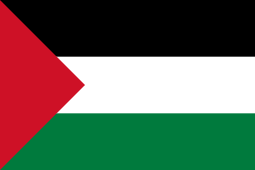17 July Revolution
| 17 July Revolution | |||||||
|---|---|---|---|---|---|---|---|
| Part of the Arab Cold War | |||||||
| |||||||
| Belligerents | |||||||
|
| |||||||
| Commanders and leaders | |||||||
|
President of Iraq Prime Minister of Iraq |
Deputy Head of Military Intelligence | ||||||
| Units involved | |||||||
| Presidential Guard |
10th Armoured Brigade Jihaz Haneen | ||||||
| Part of a series on | ||||||||||||||||||||||||||||
| Ba'athism | ||||||||||||||||||||||||||||
|---|---|---|---|---|---|---|---|---|---|---|---|---|---|---|---|---|---|---|---|---|---|---|---|---|---|---|---|---|
 | ||||||||||||||||||||||||||||
|
||||||||||||||||||||||||||||
|
||||||||||||||||||||||||||||
|
||||||||||||||||||||||||||||
|
Related topics |
||||||||||||||||||||||||||||
| Politics portal | ||||||||||||||||||||||||||||
The 17 July Revolution was a bloodless coup in Iraq in 1968, led by General Ahmed Hassan al-Bakr, which brought the Iraqi Regional Branch of the Arab Socialist Ba'ath Party to power. Both Saddam Hussein, later President of Iraq, and Salah Omar al-Ali, later a Ba'athist dissident, were major participants in the coup. According to historian Charles R. H. Tripp, the coup upset the "US-sponsored security system established as part of the Cold War in the Middle East. It appeared that any enemy of the Baghdad regime was a potential ally of the United States."[1] The Ba'ath Party ruled from the 17 July Revolution until 2003, when it was removed from power by an invasion led by American and British forces. Iraq then came under a military occupation by a multinational coalition.[2] (The 17 July Revolution is not to be confused with the 14 July Revolution, a coup on 14 July 1958, when King Faisal II was overthrown, ending the Hashemite dynasty in Iraq and establishing the Republic of Iraq.)
See also
- 1963 Syrian coup d'état
- 14 July Revolution
- Ramadan Revolution
- November 1963 Iraqi coup d'état
- List of modern conflicts in the Middle East
References
- ↑ Tripp, Charles (2010). A History of Iraq. Cambridge University Press. p. 203. ISBN 978-0-521-87823-4.
- ↑ https://www.cia.gov/library/publications/the-world-factbook/geos/iz.html